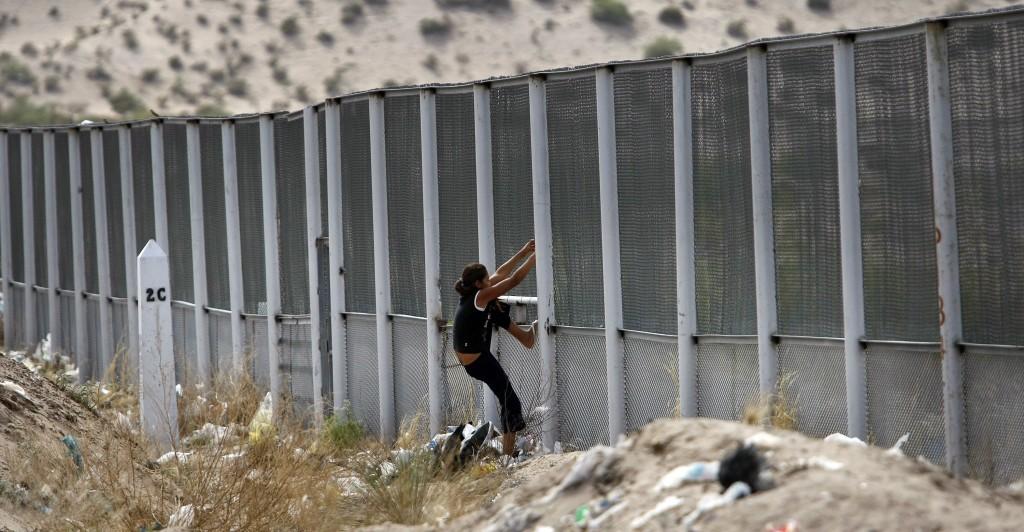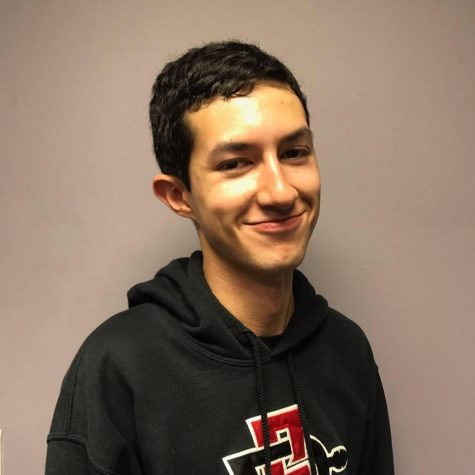Jason De Leon, an anthropology professor at the University of Michigan, journeyed to San Diego State to host the 23rd annual Adams Lecture in the Humanities, held by the SDSU Department of Classics and Humanities on Feb. 7.
De Leon is the director of the Undocumented Migration Project, which is an anthropological study of border crossings into the United States from Latin America, according to the University of Michigan website.
The study uses ethnographic, archaeological and forensic approaches to scrutinize these movements along both the U.S.-Mexico border in Arizona, and the southern border of Mexico with Guatemala.
De Leon’s SDSU presentation, a public event which took place in the Parma Payne Goodall Alumni Center, referred to the dangerous day-to-day lives of migrants and human traffickers, often referred to in Spanish as “coyotes,” who smuggle them.
The presentation included a warning to sensitive viewers, as it included sometimes-graphic images of the deadly reality of undocumented immigration through the Sonoran desert.
De Leon said a border wall was unnecessary.
“We’ve had a border wall for a long time and it’s the Texas backwoods. It’s the Sonoran desert of Arizona,” he said. “That’s the border wall we’ve been using for over 20 years.”
De Leon also said migrants who die attempting to cross into the United States are not unintended consequences of border security.
He explained the “prevention through deterrence” policy the U.S. has taken on immigration since 1993.
Prior to 1993, he said, “You could go down to San Ysidro, you could go down to El Paso at dusk and you could watch hundreds of people gather at the fence and hop over and run into these downtown urban areas.”
These kind of border crossings were unpopular with the public and unhelpful to politicians who were trying to convince their constituents they were tough on immigration, De Leon said.
The “prevention through deterrence” policy was borne out of this dilemma, De Leon said. Post-1993, it is difficult to get into the United States in central cities because of fencing and beefed-up border security, he said.
De Leon said these walls do not stop immigration into the U.S. The border is only fenced off in populated areas, forcing immigrants to cross the border in the rugged and inhospitable terrain located outside of population centers.
“We build a wall to redirect people toward places where the environment would now become an impediment to movement,” he said.“The idea is that if you force them over into this hostile terrain, it would be less-suited for crossing, and it would be easier to catch folks during this whole process.”
Since the U.S. Border Patrol has begun using this policy, migrant deaths have spiked, De Leon said, citing statistics from both the U.S. Border Patrol and the American Civil Liberties Union.
“In southern Arizona alone, we’ve got 3,196 bodies recovered since 2000,” he said. “About 1,000 of those remain unidentified.”
These deaths, he said, are used as a benchmark to determine how successful the Border Patrol is at maintaining border security.
“There is a relationship between ‘prevention through deterrence’ and this increase in migrant death,” De Leon said.
“Federal documents lay this out and they say, ‘if we do this thing, if we funnel people toward the Arizona deserts, the numbers of people with increase in terms of fatalities.’”
De Leon’s work as an archaeologist concentrated on the bodies of migrants found in the desert, and the way they are treated after death.
He brought up “necroviolence,” a term he uses to describe the mutilation of corpses of migrants, both by humans and animals in the border wilderness.
He said he and others have speculated for years about what happens to bodies of the missing in the Arizona desert. He said over the course of his project, he used pig carcasses as stand-ins for human bodies to determine how bodies decompose in the desert.
He said he and his colleagues found that is bodies are skeletonized by vultures in less than 48 hours.
“The different treatments of these bodies, the ones that die in the desert and the things that happen to them, they are violent and they involve both humans and a lot of non-humans,” he said. “But the differential taphonomic processes that we see happening in the Arizona desert right now tell us a lot about this current political moment.”
De Leon said these deaths can tell us a lot about the current political moment, and indeed are political deaths, the direct result of U.S. Border Patrol policies.
De Leon said this “complete destruction and erasure of a corpse” prevents people from properly mourning the dead.
Throughout his talk, he told stories of various individuals, dead and alive, he encountered over the course of his study.
There was the unnamed, unknown woman found in the desert in the early stages of decomposition, which De Leon described in gruesome detail.
There was the 31-year-old mother from Cuenca, Ecuador, who was abandoned by her coyote while trying to make it to the U.S. to provide for her starving children, and whose body was returned to her family in barely-recognizable condition.
There was the teenage boy, also from Cuenca, already the father of an unborn child at 15 years old, who went missing trying to get to New York to reunite with his own father.
“The types of deaths that migrants experience in the Sonoran desert are anything but dignified,” De Leon said. “Unless dying to improve your life and the life of your children is dignified.”
Humanities department chair Risa Kohn said the presentation was powerful.
“Everything we do in humanities is about people and stories,” she said. “And I think he really succeeded in bringing that home today.”
History professor Walter Penrose said he was at the presentation to gain a better understanding of immigration in the current political context.
Kohn said the idea to invite De Leon to speak at SDSU came to her during a presentation about a year ago on the destruction of cultural heritage sites in the Middle East.
“They made a comment in passing, during that talk about the archaeology of migration,” Kohn said.
“And the idea was just so interesting to me, that you could actually document these movements through archaeology- through forensic archaeology and through living archaeology,” she said. “That led us to Jason, and that’s why I wanted to bring him out here.”












